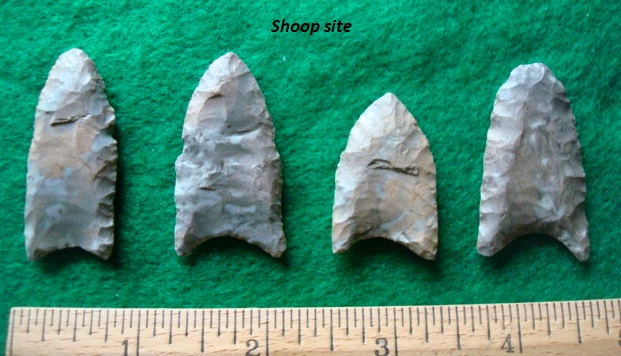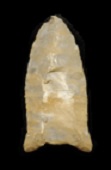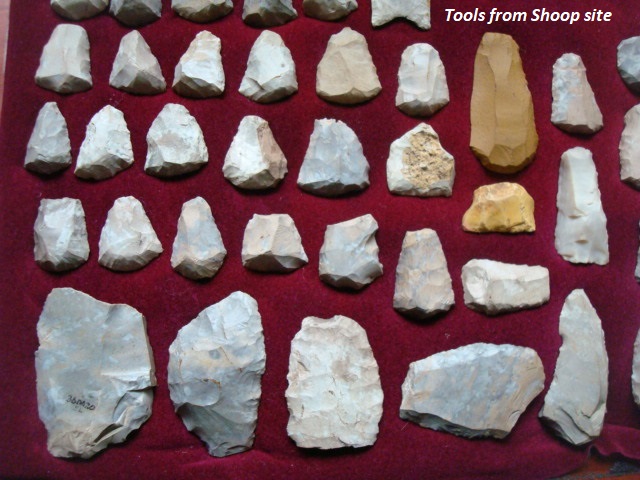


In the early 1950s, after the discovery of the Shoop Site, and based on the fluted points, it was thought to be a Folsomoid related site. After years of research, the site was recognized as earlier, and included in the Clovis culture component of the Paleo indian period. There are only about 28 - 34 complete points for study. One characteristic of the Shoop point, is the amount of ancient resharpenings. Most of points will fall between 1" - 1 3/4", all due to resharpening. This is due to the unknown existence of suitable lithic material near the site. Many have been resharpened to exhaustion and utilized as scrapers or other tool form. The points found are often rounded at the tip, and the typical example has parallel sides, and will often have multiple flutes. A few points exhibit a slightly flared base. The basal edges will exhibit fine secondary flaking with smooth edge grinding, and the flutes may extend to over half the length of the point. The primary material is Onondaga chert from N.Y., with a few points made of Houserville jasper. This is a lower quality jasper found in Center Co., Pa. They didn't utilize the better quality jaspers found in Berks and Lehigh Co's. This is the largest Paleo culture site in Pa., and has yielded well over 3000 tool forms. The fluting technique and tool forms are all characteristic of the Clovis cultue, and the Shoop site would date between 11,000 B.C. - 9800 B.C.



Witthoft is a pioneering anthropologist who retired as a professor for the Department of Anthropology at the University of Pennsylvania. He serves as Chief Curator for the Pennsylvania State Museum and as State Archaeologist for the State of Pennsylvania. He was an expert in the archaeology of Pennsylvania. This point was named in a professional publication and has many professional references. This is considered a valid type.
.